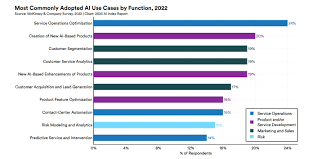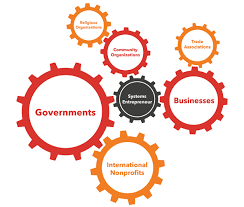The Evolution of Artificial Intelligence Development
Artificial intelligence (AI) has rapidly evolved from a theoretical concept to a transformative force across various industries. Its development has been marked by significant milestones that have reshaped how we interact with technology and perceive its potential.
Early Beginnings
The roots of artificial intelligence can be traced back to the mid-20th century when pioneers like Alan Turing and John McCarthy began exploring the possibilities of machines that could mimic human intelligence. Turing’s famous test, proposed in 1950, set the stage for evaluating a machine’s ability to exhibit intelligent behavior indistinguishable from that of a human.
Key Milestones in AI Development
The journey of AI development is dotted with groundbreaking achievements:
- 1956 – The Dartmouth Conference: Often considered the birth of AI as a field, this conference brought together leading researchers to discuss the potential of machines simulating human intelligence.
- 1997 – Deep Blue vs. Garry Kasparov: IBM’s Deep Blue made history by defeating world chess champion Garry Kasparov, showcasing AI’s capability in complex problem-solving.
- 2011 – Watson on Jeopardy!: IBM’s Watson demonstrated advanced natural language processing and information retrieval by winning against former champions on the quiz show “Jeopardy!”.
- 2016 – AlphaGo vs. Lee Sedol: Google’s DeepMind developed AlphaGo, which defeated Go champion Lee Sedol, highlighting advancements in machine learning and strategic thinking.
The Role of Machine Learning and Neural Networks
A significant driver behind recent AI advancements is machine learning, particularly deep learning techniques utilizing neural networks. These models are inspired by the human brain’s structure and function, allowing computers to recognize patterns and make decisions with minimal human intervention.
This approach has led to remarkable progress in areas such as image and speech recognition, natural language processing, and autonomous systems. The ability of neural networks to process vast amounts of data efficiently has enabled breakthroughs that were once thought impossible.
Applications Across Industries
The impact of AI is evident across numerous sectors:
- Healthcare: AI assists in diagnosing diseases, personalizing treatment plans, and managing patient data more effectively.
- Finance: Algorithms analyze market trends for better investment strategies and fraud detection systems enhance security measures.
- Automotive: Autonomous vehicles leverage AI for navigation, obstacle detection, and decision-making on the road.
- E-commerce: Personalized recommendations powered by AI improve customer experiences and drive sales growth.
The Future of Artificial Intelligence
The future holds immense potential for artificial intelligence as it continues to evolve. Researchers are exploring ethical considerations surrounding AI deployment while striving to create more transparent and explainable models. The integration of AI into everyday life will likely deepen as technology becomes more sophisticated and accessible.
The ongoing development of artificial intelligence promises not only to revolutionize industries but also to address some of humanity’s most pressing challenges. As we continue down this path, collaboration between researchers, policymakers, and industry leaders will be crucial in harnessing the full potential of AI responsibly.
Understanding AI Development: Roles, Latest Innovations, Definitions, and Types of Technology
- What does an artificial intelligence developer do?
- What is the latest development in AI?
- What is artificial intelligence development?
- What are the 4 types of AI technology?
What does an artificial intelligence developer do?
An artificial intelligence developer is responsible for designing, building, and implementing AI models and systems to solve complex problems. Their work involves creating algorithms that enable machines to learn from data, recognize patterns, and make decisions. This often includes tasks such as data preprocessing, selecting appropriate machine learning models, training these models with large datasets, and fine-tuning them for optimal performance. AI developers collaborate closely with data scientists and engineers to integrate AI solutions into existing software applications or develop new products entirely. Additionally, they continually monitor the performance of AI systems and update them as needed to ensure accuracy and efficiency in real-world applications.
What is the latest development in AI?
The latest development in artificial intelligence centers around generative AI models, particularly those based on transformer architectures like OpenAI’s GPT-4 and Google’s PaLM. These models have demonstrated remarkable capabilities in generating human-like text, creating images from textual descriptions, and even coding. They are being integrated into various applications, enhancing tools for content creation, customer service, and software development. Additionally, advancements in AI ethics and explainability are gaining attention as researchers strive to make AI systems more transparent and aligned with human values. This progress is complemented by improvements in hardware, such as specialized AI chips that accelerate processing speeds and energy efficiency, further expanding the potential of AI technologies across different sectors.
What is artificial intelligence development?
Artificial intelligence development refers to the process of designing and creating systems that can perform tasks typically requiring human intelligence. This includes activities such as learning, reasoning, problem-solving, perception, and language understanding. The development of AI involves a combination of computer science, data analysis, machine learning algorithms, and neural networks to build models capable of processing information and making decisions. As AI technology advances, it is increasingly being integrated into various applications across industries like healthcare, finance, automotive, and more. The ultimate goal of AI development is to create intelligent systems that can enhance efficiency and innovation while addressing complex challenges in diverse fields.
What are the 4 types of AI technology?
Artificial intelligence technology is commonly categorized into four types based on its capabilities and sophistication: reactive machines, limited memory, theory of mind, and self-aware AI. Reactive machines are the most basic form of AI, designed to perform specific tasks without the ability to store past experiences or learn from them. Limited memory AI can retain data for a short period, allowing it to make informed decisions by referencing historical information; this type is prevalent in applications like autonomous vehicles. Theory of mind AI, still largely theoretical, would be capable of understanding emotions and intentions in humans and other entities, enabling more complex interactions. Finally, self-aware AI represents the ultimate goal in AI development—a system that possesses consciousness and self-awareness akin to human beings. While current advancements have primarily focused on reactive machines and limited memory systems, ongoing research aims to explore the potential of theory of mind and self-aware AI in the future.


